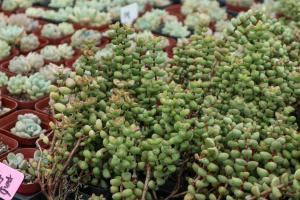How to Care for Peppermint Plants in Pots
One of the easiest herbs to grow is peppermint, and it is an especially popular herb for container gardening. Peppermint plants can grow very well in pots, and they require minimal maintenance. However, to keep them healthy and flavorful, certain steps must be taken to care for them correctly. In this article, we discuss how to care for peppermint plants in pots.
Choosing the Right Pot and Soil
When selecting a pot for peppermint, make sure it is large enough to accommodate the plant and has drainage holes. The ideal pot size is 12 inches in diameter to allow the roots to spread out. The soil should be well-draining and contain organic materials like compost or peat moss. It is also helpful to add perlite or sand to the mixture to improve drainage.
Watering and Sunlight
Peppermint plants need consistent moisture, so water them regularly. The soil should be kept evenly moist; however, it should not be oversaturated. Overly wet soil can cause the roots to rot. It is best to water the plant when the soil is dry to the touch. Peppermint plants grow best in bright, indirect sunlight, and they can tolerate some shade. Keep the plant in an area where it can receive at least six hours of sunlight daily.
Fertilizing and Pruning
Fertilizing peppermint plants in pots is essential to maintain their health and vigor. Use a balanced, slow-release fertilizer during the growing season. Apply the fertilizer every four to six weeks or according to package instructions. Pruning is necessary to stimulate new growth and keep the plant bushy. Cut back the tips of the branches regularly to encourage new shoots. An overgrown plant can be pruned back by half to rejuvenate it.
Pest and Disease Control
Peppermint plants are relatively pest- and disease-resistant; however, they may occasionally suffer from spider mites or aphids. If you notice tiny webs or small, green insects on the plant, spray them with insecticidal soap or neem oil. Powdery mildew is a common problem with peppermint plants, especially in humid conditions. Mildew can be treated with a fungicide spray or by increasing air circulation around the plant.
Harvesting and Storage
Peppermint leaves can be harvested throughout the growing season. Wait until the plant is at least six inches tall before harvesting the leaves. Pluck individual leaves as needed, or cut the stem just above a leaf node to encourage new growth. Air-dry the leaves or use them fresh in recipes. Store dried leaves in an airtight container in a cool, dark place away from moisture and light.
Conclusion
Peppermint is a valuable herb to have in any garden or container. By following the tips above, you should be able to keep your peppermint plant healthy and productive. Peppermint is not only useful in cooking and teas, but it also repels many insects and pests. With a few basic care practices, you can enjoy fresh peppermint leaves all season long.

 how many times do yo...
how many times do yo... how many planted tre...
how many planted tre... how many pine trees ...
how many pine trees ... how many pecan trees...
how many pecan trees... how many plants comp...
how many plants comp... how many plants can ...
how many plants can ... how many plants and ...
how many plants and ... how many pepper plan...
how many pepper plan...
































